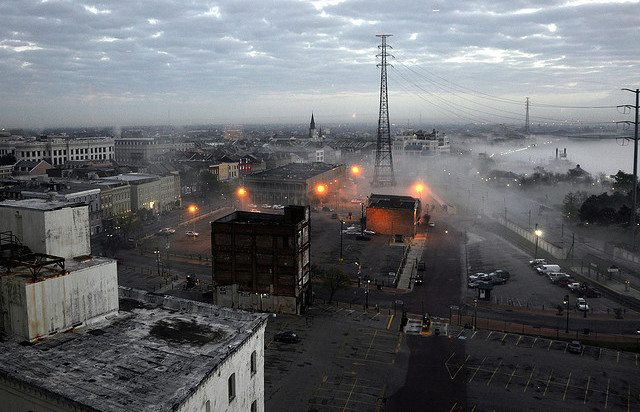It’s hard to say just how your favorite songs become your favorite songs, but it shouldn’t be hard to understand that sometimes our favorites are also immensely popular. We are not unique snowflakes, at least not when it comes to pop music, and sometimes (as previous iterations of this column have tried to show) we aren’t even that different from people across borders, seas, and continents.
A good song travels at the speed of radio waves, taking up residence in ears wherever, whenever. Folk songs have traveled best of all, passing from porch to porch or from prayer-bench to prayer-bench, until the likes of Alan Lomax and the Greenwich Village folkies recorded and spread these tales like acoustic wildfire.
With the internet being the amazing Alexandrian library/timesuck that it is, it has never been easier to trace these musical tendrils all over the globe. Take ‘The House of the Rising Sun’, first recorded in 1933 by Clarence “Tom” Ashley and Gwen Foster, and then by Lomax in 1937 as sung by Georgia Turner, the teenaged daughter of a coal miner in Middlesboro, Kentucky. Her version tells the now familiar tale of regret in just a minute and a half: “Go tell my baby sister never do like I have done / To shun that house in New Orleans they call the Rising Sun.” With or without switching the narrator’s gender or the location (to Ethiopia, for instance), and with verses added or subtracted over the years, the song would always warn against the perils of prostitution, prison, and dipsomania.
From those earliest recordings and Lomax’ publication sprang versions by Woody Guthrie and Lead Belly, making it possible for Dave Van Ronk to learn the song only for an upstart Bob Dylan to then ‘steal’ out from under him; folks songs having suddenly become a hot commodity in the very early 1960s.
Though it was then recorded by the lovely likes of Joan Baez, Nina Simone, and the great Marie Laforêt (who also made the Japanese version above), it was not until the UK band the Animals recorded it in 1964 that the song acquired the spooky organ riff (see also “96 Tears”, “Sunny”, and “Light My Fire”) that would make it a #1 record. This would be the version that popped up in Italian, Spanish, Khmer, Polish, or Finnish (more on those below, don’t worry), but it also directed the spotlight back to the song’s earlier, racier iterations, such as the ones from the 1940s by Josh White, the handsome guitarist, singer, and civil rights activist who would become one of Roosevelt’s closest African American friends.
He would perform this song with Libby Holman, a white actress-turned-torch-singer accused of murdering her millionaire husband. Directed on radio and stage by Nicholas Ray (later to be the visionary director of Rebel Without A Cause), they were the first interracial musical act, a fact that would get them banned by the BBC. White’s biography is too rich to summarize here, but it includes touring with blind musicians and sleeping in horse stables as a preteen, almost losing a hand to gangrene, recording with Billie Holiday, and being the first black singer to give a White House command performance.
While White and Holman approached the song as a blues classic, Dolly Parton would in the early 1980s annex the brothelly lyrics to enhance her busty Best Little Whorehouse in Texas persona, but she wasn’t the first to see its disco appeal, as it had already been wildly and globally successful in 1977 through EPIC versions by Gigi (Germany), Santa Esmeralda (France), and Hot R.S. (South Africa); these latter two, at almost fifteen minutes long, are each about ten times as long as Georgie Turner’s ‘original’.
And the simple minor-key melody not only lent itself well to Latin-infused disco records, it would work just as excellently in country, reggae, surf, skiffle, metal, bluegrass, and jazz versions, and not just in English.
Combining the song’s already heavy vibe with Alan Price’s organ riff from the Animals version and a very sharp Scandinavian suit made for quite the spooky result, as we can see/hear in this almost demonic lounge version from Finland.
Or what about an ASTOUNDINGLY funky orchestral version from the GDR? A French singer singing a Spanish translation? The French Elvis doing it in German?
A Cambodian psych rock edition by the person with possibly the best rockstar name ever, Sinn Sisamouth?
Perhaps a punk murder ballad of sorts, in Polish? One from the former Yugoslavia? Or Novosibirsk?
Yet the most graceful version I’ve probably heard in my life-long quest to collect the brightest Houses of the Rising Sun (a selected seven and and a half hours so far and counting) must be the Blind Boys of Alabama’s mashup of the melody with another altogether deathless folk song, one with an altogether more hopeful message in which all regret is ultimately redeemed.
Top image, “Dawn over the French Quarter, New Orleans” by Christopher Connell, courtesy of his Flickr page.

